

Platonic solid. History[edit] The Platonic solids have been known since antiquity.
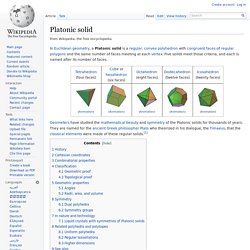
Carved stone balls created by the late neolithic people of Scotland lie near ornamented models resembling them, but the Platonic solids do not appear to have been preferred over less-symmetrical objects, and some of the Platonic solids are even absent.[2] Dice go back to the dawn of civilization with shapes that predated formal charting of Platonic solids. Stereoscopy. Pocket stereoscope with original test image.
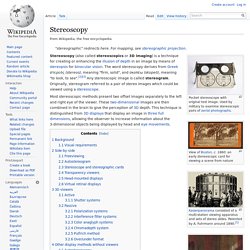
Used by military to examine stereoscopic pairs of aerial photographs. View of Boston, c. 1860; an early stereoscopic card for viewing a scene from nature. Euler angles. Euler angles represent a sequence of three elemental rotations, i.e. rotations about the axes of a coordinate system.
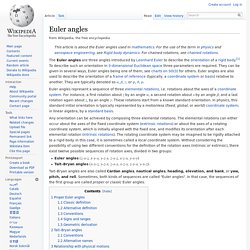
For instance, a first rotation about z by an angle α, a second rotation about x by an angle β, and a last rotation again about z, by an angle γ. These rotations start from a known standard orientation. 3-manifold. Introduction[edit] Definition[edit] Mathematical theory of 3-manifolds[edit]
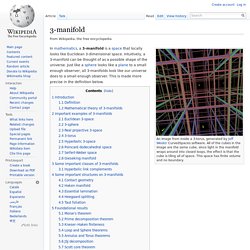
Knot (mathematics) Overhand knot becomes a trefoil knot by joining the ends.
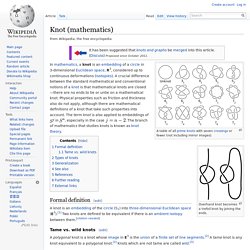
In mathematics, a knot is an embedding of a circle in 3-dimensional Euclidean space, R3, considered up to continuous deformations (isotopies). A crucial difference between the standard mathematical and conventional notions of a knot is that mathematical knots are closed—there are no ends to tie or untie on a mathematical knot. Physical properties such as friction and thickness also do not apply, although there are mathematical definitions of a knot that take such properties into account.